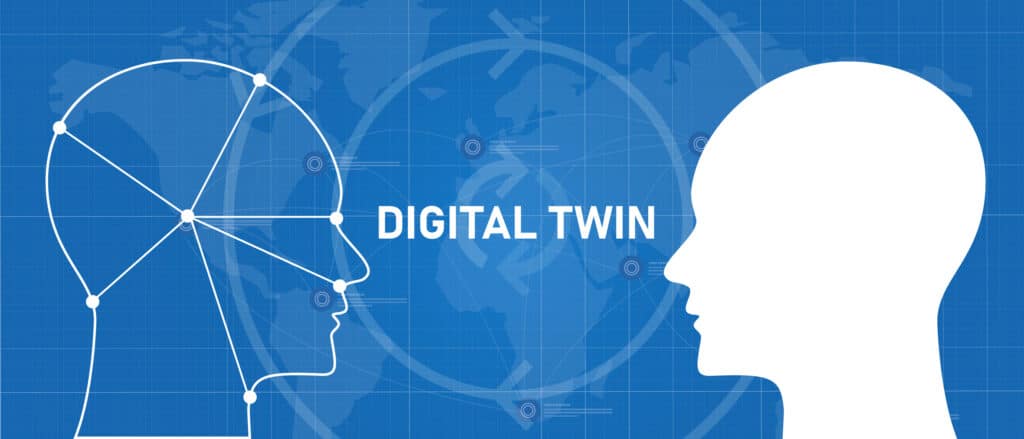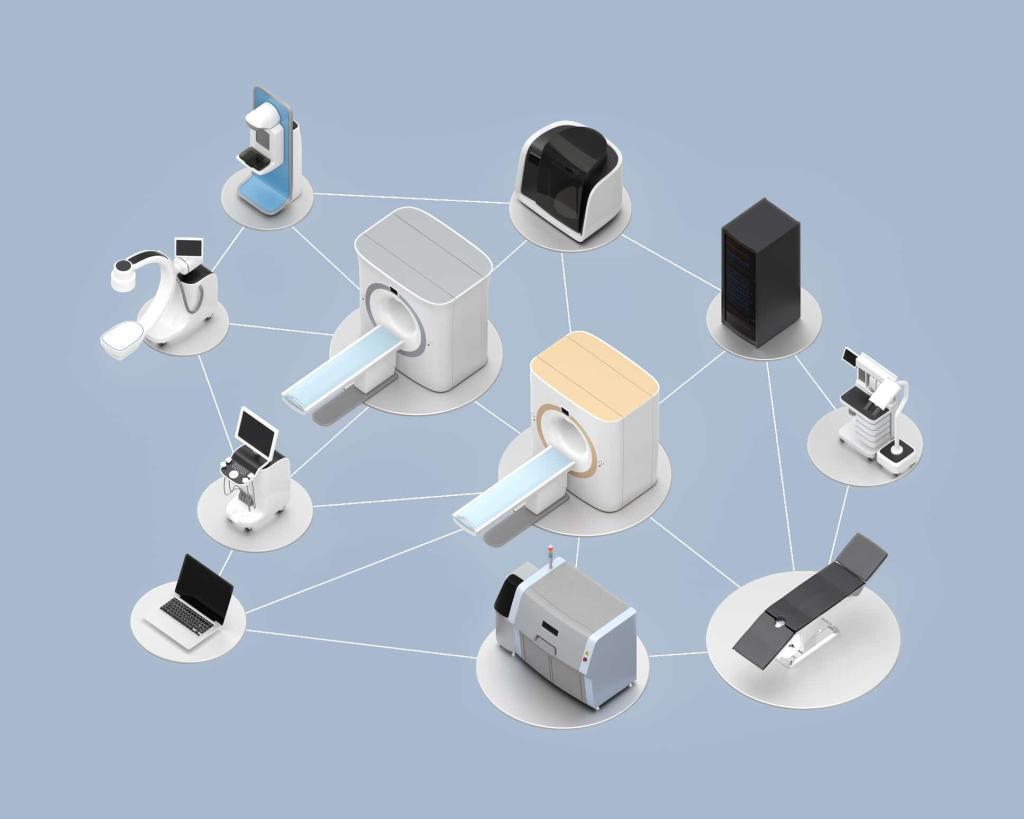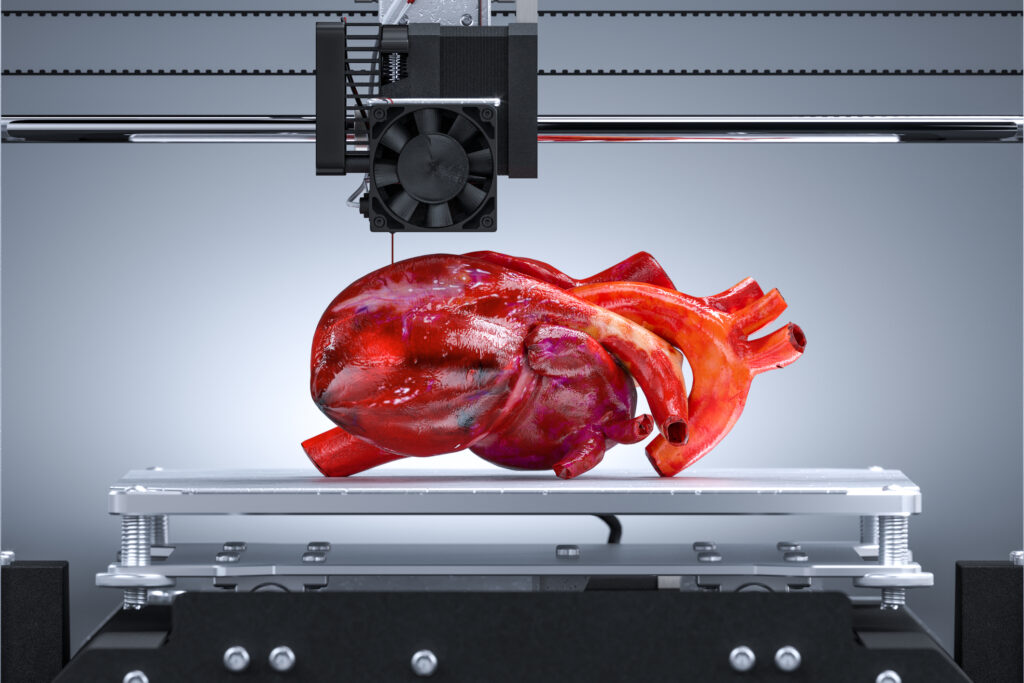Summary: This article explores the concept of a digital twin of the heart, an emerging innovation that has the potential to change how medical professionals understand and treat cardiac conditions. It explains what a digital twin is, how it is created, and why this technology holds such promise for personalising treatments, enhancing diagnoses, and guiding medical interventions. It also considers ethical and privacy concerns and potential future developments that may shape cardiovascular healthcare.
Keywords: Digital Twin; Heart Modelling; Cardiac Care; Personalised Medicine; Simulation; Healthcare Innovation.
Introduction to the Digital Twin
New technologies have revolutionised healthcare in unprecedented ways, introducing a wide range of tools and methods that aim to enhance patient treatment, improve diagnostic accuracy, and reduce risks in clinical procedures. Among these technological leaps is the notion of the “digital twin,” which stands out as one of the most promising approaches for understanding and managing complex systems. Originally applied in fields such as aerospace, manufacturing, and automotive design, this concept has gradually made its way into healthcare, providing compelling insights into patient care and disease management.
In simple terms, a digital twin is a computer-generated replica of a real-life asset or system. Through the integration of sensor data, medical imaging, and machine learning algorithms, it mirrors the state and functionality of its real counterpart. When transferred to the field of cardiology, the digital twin becomes an elaborate model of the human heart, reflecting the structure and function of an actual patient’s organ. This representation can then be used to run simulations, test different therapeutic strategies, and predict outcomes before implementing any intervention on a real heart.
The digital twin concept lies in its ability to deliver genuinely personalised insights. It goes beyond traditional population-based approaches by concentrating on each patient’s distinct anatomy, physiology, and medical background. The potential advantages stretch from more accurate diagnosis to fewer surgical or procedural complications. In essence, a digital twin of the heart could mark the start of a new era in cardiovascular medicine, where technology enables clinicians to make more precise treatment decisions and offer better patient experiences.
Understanding the Concept of a Digital Twin
A digital twin is far more than a simple computer model. It is a dynamic system updated with real-time or near-real-time data, allowing it to mirror the changing state of the physical entity it represents. This is accomplished through a collection of sensors, computational methods, and data analytics. In healthcare, these sensors can range from wearables that track daily activity and vital signs to in-hospital devices that monitor blood pressure, heart rate, oxygen levels, and more.
The digital twin framework originated in engineering, where it was used to optimise processes, predict failures, and streamline product lifecycles. By simulating the entire life of a product or system, engineers could identify flaws before they arose in physical prototypes. This level of foresight resulted in improved safety, reduced costs, and accelerated innovation.
When applied to medicine, the digital twin works in tandem with the patient’s actual body. For instance, imaging techniques such as MRI and CT scans produce detailed pictures of the heart’s structure. These images are then processed and converted into 3D models. Real-time physiological data, including heart rate variability, blood pressure readings, or blood flow measurements, can be integrated to continuously update this representation. The ultimate aim is to achieve a “living” model that remains in sync with the patient’s changing condition. This enables precise forecasting of disease progression, potential complications, and the impact of different treatments.
It is important to distinguish a digital twin from less advanced modelling approaches. While standard models often rely on generic assumptions, the digital twin emphasises individual specificity. By combining personal patient information, a digital twin of the heart can show how subtle variations in anatomy, lifestyle, and genetics can translate into different outcomes. This degree of personalisation holds considerable significance in cardiology, where minute differences in heart structure or function can significantly affect diagnosis and therapy decisions.
Why Focus on the Heart?
The heart is a critical organ that pumps blood throughout the body, supplying oxygen and nutrients to cells while removing waste products. Cardiovascular diseases remain one of the leading causes of mortality worldwide, creating an ongoing need for more precise diagnostic and treatment strategies. Given the heart’s essential function, conditions such as coronary artery disease, arrhythmias, and heart failure can lead to severe complications, affecting not only quality of life but also survival rates.
Cardiology has experienced major technological progress in recent decades. Imaging technologies, catheter-based interventions, and sophisticated monitoring devices have all contributed to better outcomes. Yet, predicting how a particular intervention will affect a specific patient continues to pose difficulties. Even with state-of-the-art diagnostics, there is always a measure of uncertainty in determining how a given patient’s heart might respond to a surgical procedure or medication.
The digital twin concept addresses this challenge by delivering an individualised prediction tool. Whether a surgeon needs to decide on an approach to bypass surgery or a cardiologist must fine-tune medication dosages for a patient with congestive heart failure, the digital twin can simulate various “what-if” scenarios to identify the approach most likely to succeed. It offers a bridge between population-level data and patient-specific factors, minimising the guesswork that often comes with clinical decision-making.
Another reason to focus on the heart lies in how well-established digital health technologies are in cardiology. Wearable heart monitors, implantable devices such as pacemakers, and advanced imaging all generate extensive streams of data that can feed into a digital twin. The availability of consistent, high-quality data is essential for maintaining an accurate model. Consequently, cardiology provides a suitable domain for implementing and refining digital twin methodologies, potentially paving the way for applications in other areas of healthcare.
Steps to Create a Digital Twin of the Heart
Crafting a digital twin of the heart involves a series of intricate processes that merge clinical knowledge, computational techniques, and robust data collection. Below are the primary steps:
Data Acquisition
The creation process begins with gathering data from diverse sources. These sources often include imaging studies like MRI, CT, or echocardiograms, which reveal the structural details of the heart. In addition, physiological data such as blood pressure, heart rate variability, and electrical activity from electrocardiograms (ECGs) contribute to building a dynamic model.
Data Integration and Pre-processing
Collected data must then be consolidated into a consistent digital framework. Since medical data may come in various formats and be stored in different systems, a standardised method of merging and cleaning the information is required. Advanced image processing and data analytics help correct errors or inconsistencies, ensuring that the digital twin accurately reflects the patient’s heart.
Model Construction
Once the data is organised, the model can be built. Sophisticated computational tools can transform 2D images into 3D structures, capturing every chamber, valve, and artery of the heart. Mathematical models of blood flow, tissue mechanics, and electrical conduction pathways can also be layered upon this 3D structure, converting it into a functional model.
Ongoing Calibration
A key difference between a static model and a digital twin is constant calibration. Sensor data, real-time monitoring devices, and updated imaging studies can adjust and refine the model as the patient’s physiological state changes. This calibration enables the twin to remain an up-to-date reflection of the real heart.
Simulation and Analysis
At this stage, various simulated scenarios can be run to predict outcomes. For example, if a patient is scheduled for a heart valve replacement, a cardiologist can use the digital twin to test different types of valves, implant positions, or surgical approaches. By comparing the simulations’ results, clinicians can identify the strategy most likely to yield positive results, reducing the risk of complications and improving patient satisfaction.
Validation
Lastly, it is crucial to verify that the digital twin’s predictive abilities match real-world outcomes. This involves comparing the model’s forecasts with actual clinical data from the patient’s response to treatments. Regular validation builds trust in the technology and ensures that errors are corrected promptly.
Clinical Applications and Benefits
Digital twins of the heart offer a variety of clinical uses that extend beyond basic modelling. Below are several key applications that demonstrate how this technology can assist both patients and healthcare providers:
Personalised Treatment Plans
One of the most powerful outcomes is the capacity to design treatments based on an individual patient’s unique physiology. Clinicians can run multiple simulations to see how the patient might respond to different drug doses, surgical options, or implantable devices. This level of customisation can help eliminate the trial-and-error approach often associated with cardiac care.
Optimised Surgical Procedures
Open-heart and minimally invasive cardiac surgeries carry inherent risks, and the slightest error can lead to complications. With a digital twin, surgeons can rehearse procedures in a virtual setting, identifying potential challenges and planning solutions in advance. This reduces the likelihood of unexpected complications and could shorten surgery durations, ultimately improving patient outcomes.
Early Detection of Cardiac Issues
Regular monitoring of a digital twin, which is updated with real-time data, can reveal subtle changes in cardiac function. These shifts might indicate an early stage of a developing problem, such as arrhythmias or coronary artery blockages, long before they manifest in conventional clinical tests. Early detection allows for timely interventions, increasing the likelihood of successful treatment.
Drug Testing and Pharmaceutical Research
Researchers can utilise digital twins to test how certain drugs might affect different patient groups. By adjusting variables such as age, genetic predisposition, and comorbidities, digital twins can predict how a drug’s effectiveness and side effects may vary. This can guide pharmaceutical research, cutting costs and accelerating the path to new, safer medications.
Education and Training
Medical students and healthcare professionals can use digital twins of the heart to deepen their knowledge of cardiac anatomy and physiology. They can practise interpreting complex data and experimenting with clinical interventions in a virtual setting, reducing the learning curve when they move to real clinical environments.
Overall, these applications highlight how digital twins can improve patient outcomes and streamline the entire cardiac care process. By offering predictive capabilities that account for the complexity of individual hearts, the technology has the potential to make care more precise, proactive, and efficient.
Ethical and Privacy Considerations
While digital twins of the heart offer remarkable benefits, their implementation also raises significant ethical and privacy concerns. These must be addressed to maintain patient trust and uphold the standards of responsible medical practice.
Data Ownership and Control
The data used to build and maintain a digital twin is typically drawn from a variety of sources, including imaging devices, wearable sensors, and clinical notes. Patients have a right to know how their data is collected, stored, and used. Health organisations should be transparent about data ownership and ensure that patients can grant or revoke consent whenever necessary.
Data Security
Because digital twins rely on large volumes of sensitive information, they can become targets for cyberattacks. The risk of unauthorised access or data breaches is substantial. Robust encryption, secure data transfer protocols, and strict access controls should be standard to protect patient information. Ongoing security assessments, along with rapid response strategies for potential breaches, are also crucial.
Accuracy and Accountability
While a digital twin can provide valuable clinical insights, inaccuracies in data or modelling can mislead healthcare providers. Who bears responsibility if decisions based on flawed model outputs lead to patient harm? Clear guidelines and accountability frameworks must be established to outline responsibility for validating and maintaining these complex digital systems.
Informed Consent
Patients who agree to the creation of a digital twin should fully understand what the model is, the kind of data being used, and the potential implications for their care. Informed consent procedures need to be comprehensive, ensuring patients are aware of both the benefits and limitations. This is especially relevant in research contexts, where digital twins might be used to explore experimental therapies or novel interventions.
Equity of Access
One final concern revolves around the possibility of digital twins being available only to well-funded research institutions or specialised clinics. Socio-economic and geographic disparities could limit the extent to which this technology benefits all patients. Policy-makers and healthcare organisations should work together to promote equitable access, ensuring that technological advancements do not widen existing gaps in healthcare services.
Future Prospects
The field of digital twins in healthcare is continually evolving. As computational power grows and data analysis methods become more advanced, the potential to develop ever more detailed models of the heart is likely to increase. This progress will be driven by improved imaging methods, wearable sensors, and emerging fields such as genomics, which can add new layers of personalisation and predictive power to digital twins.
One particularly intriguing development is the integration of artificial intelligence (AI) and machine learning algorithms into digital twin frameworks. AI techniques can sift through massive datasets, recognising patterns that might escape human observers. When applied to digital twins, these algorithms could automatically detect early warning signs of deterioration, suggest modifications to treatment protocols, or flag anomalies in the model that may require further investigation.
Another area of interest is the prospect of combining multiple organ twins for more holistic patient care. Because the heart does not function in isolation, a future objective could be creating a digital model that incorporates not only cardiovascular systems but also interactions with kidneys, lungs, and other organs. This interconnected approach could help clinicians more accurately assess how treatments for one condition might affect other parts of the body.
However, achieving these goals will require collaboration between various stakeholders, including medical professionals, technology experts, regulatory authorities, and patient advocacy groups. Regulatory bodies will play an important role in setting standards and guidelines for data security, model validation, and ethical considerations. Concurrently, researchers will need to refine data collection and modelling methods, ensuring digital twins remain accurate and clinically relevant over time.
Public acceptance and understanding will also be crucial. Through patient education and transparent communication, it will be possible to alleviate concerns and foster trust in this technology. Ultimately, as more successful case studies emerge and the evidence base grows, digital twins could become a standard component of personalised care pathways, reshaping how we approach prevention, diagnosis, and treatment.
Conclusion
A digital twin of the heart represents an exciting step forward in the ongoing quest to improve cardiac care. By building a living, evolving model of an individual patient’s heart, medical professionals can better predict outcomes, personalise treatments, and identify potential complications before they arise in the clinical setting. This technology, which combines advanced imaging, physiological data, and sophisticated computational methods, holds the promise of bridging the gap between existing medical knowledge and the distinct nuances of each patient’s cardiovascular system.
Even so, various challenges remain to be addressed. Ethical dilemmas, such as data privacy and issues of equitable access, cannot be overlooked. Similarly, the technical demands of creating and updating such models require significant investment in computing resources and data science expertise. Despite the hurdles, continuous strides in AI, data analytics, and wearables suggest that digital twins could become an integral element of future healthcare.
For patients living with heart disease and the clinicians who treat them, a digital twin could well be the critical link between uncertainty and clarity. Through detailed simulation of surgeries, more informed drug prescriptions, and potential early warnings of developing conditions, the digital twin of the heart could shape a new paradigm in cardiology. By uniting clinical expertise with cutting-edge technology, we stand on the brink of a time when a personalised, responsive model of each patient’s heart becomes a central part of routine medical practice, ultimately paving the way for safer, more targeted treatments and better patient outcomes.
Disclaimer
The content presented in Digital Twin of the Heart is for informational purposes only and does not constitute medical advice, diagnosis, or treatment. While the article explores emerging technologies in cardiology, including digital twin models, it is not intended to replace consultation with qualified healthcare professionals. Readers should not rely on the information in this publication to make decisions about their personal health or treatment options.
Open Medscience does not endorse any specific medical products, procedures, or treatments mentioned and is not liable for any outcomes resulting from the use of information provided herein. The technologies discussed are subject to ongoing research and development, and their application may vary depending on regulatory approvals and clinical validation.
Additionally, references to ethical, legal, or privacy considerations reflect current discussions at the time of publication and may evolve. Individuals and institutions should seek independent advice and ensure compliance with relevant data protection and healthcare regulations when engaging with digital health technologies.
You are here: home » diagnostic medical imaging blog »



